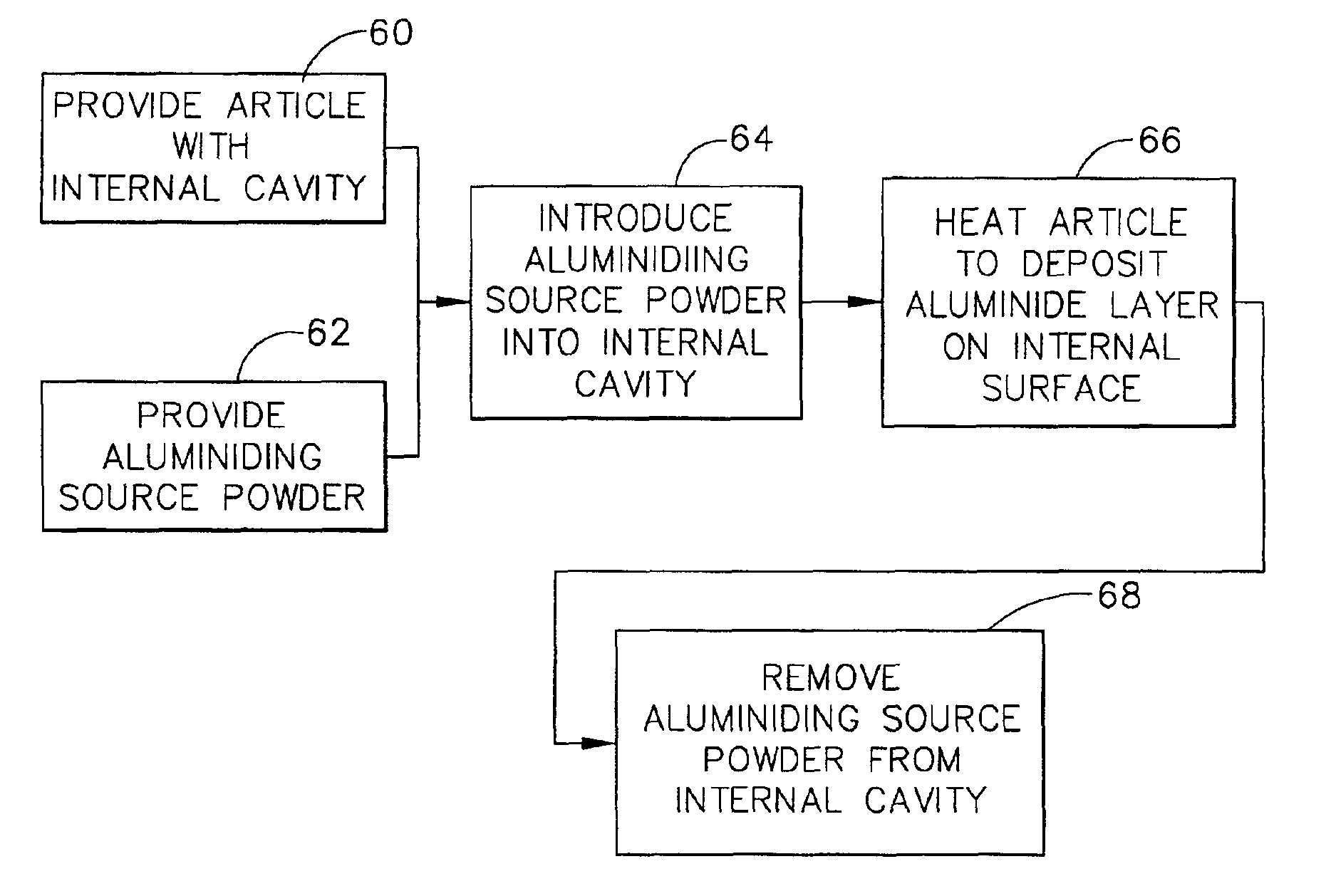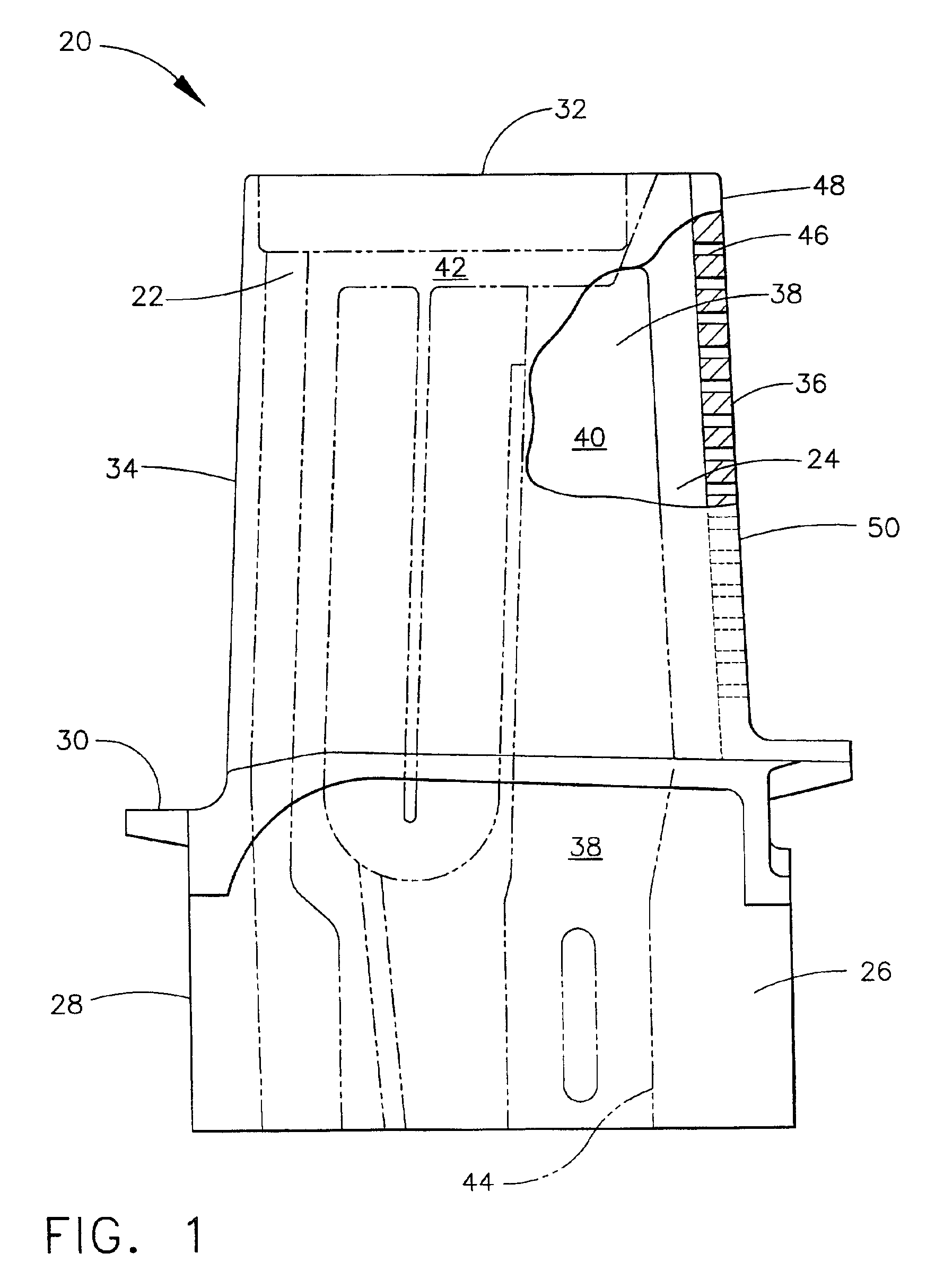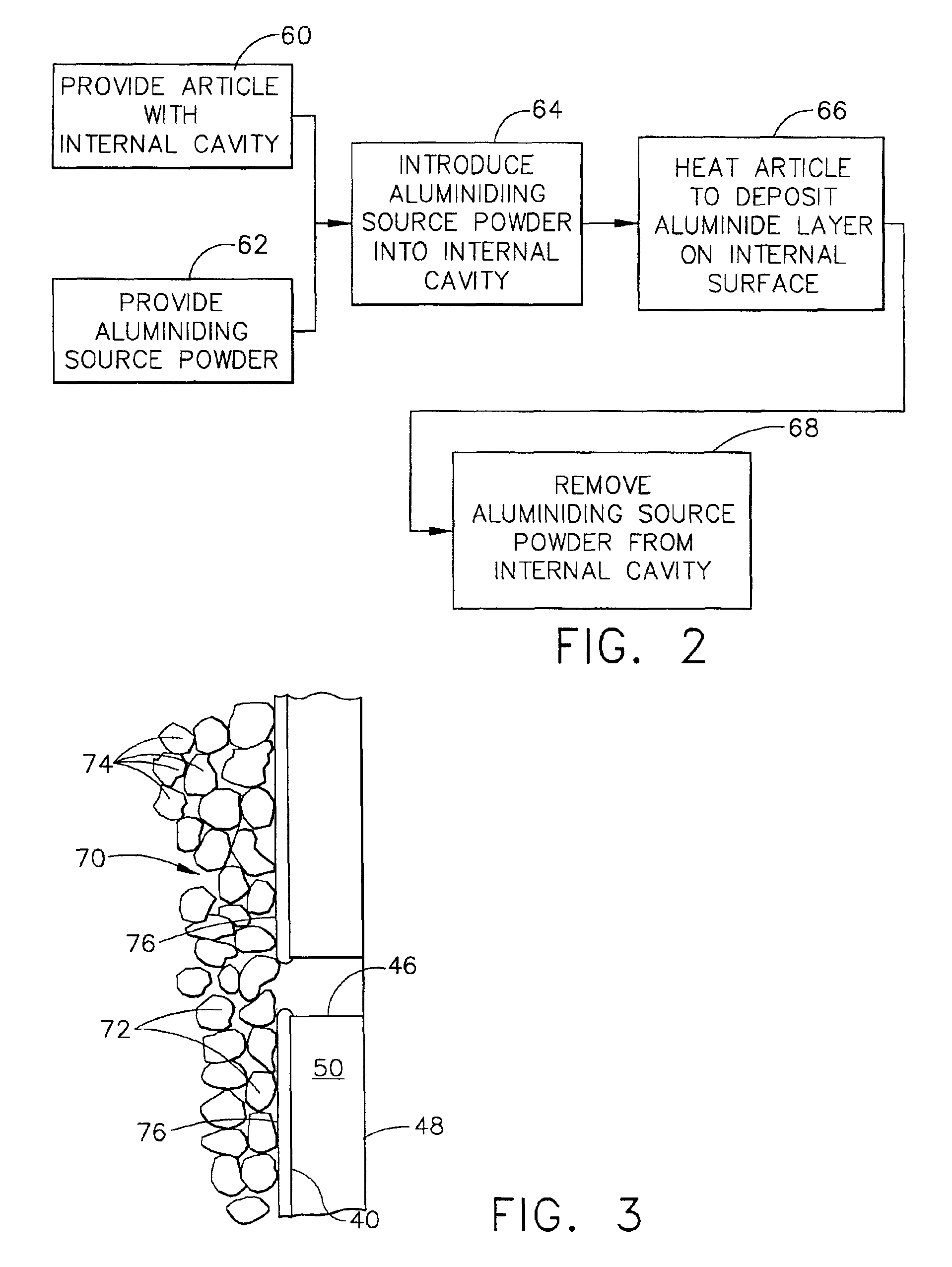Dimensionally controlled pack aluminiding of internal surfaces of a hollow article
- Summary
- Abstract
- Description
- Claims
- Application Information
AI Technical Summary
Benefits of technology
Problems solved by technology
Method used
Image
Examples
Embodiment Construction
[0025]FIG. 1 depicts a hollow component 20 of a gas turbine engine, in this case a hollow gas turbine blade 22, with interior structure shown in phantom view. The gas turbine blade 22 is preferably formed of a nickel-base superalloy. The turbine blade 20 includes an airfoil 24 against which the flow of hot exhaust gas is directed. The turbine blade 20 is mounted to a turbine disk (not shown) by a dovetail shape 26 in a shank 28 of the gas turbine blade 22, which extends downwardly from the airfoil 24. The dovetail shape 26 engages a slot on the turbine disk (not shown) to mount the gas turbine blade 22 to the turbine disk. A platform 30 extends laterally outwardly from the area where the airfoil 24 is continuous with the shank 28. The gas turbine blade 22 may be described as having a tip end 32 opposite from the shank 28, a leading edge 34 that is first contacted by the hot exhaust gas, and a trailing edge 36.
[0026]As may be seen in the phantom view of FIG. 1, one or more internal c...
PUM
| Property | Measurement | Unit |
|---|---|---|
| Temperature | aaaaa | aaaaa |
| Temperature | aaaaa | aaaaa |
| Length | aaaaa | aaaaa |
Abstract
Description
Claims
Application Information
 Login to View More
Login to View More - R&D
- Intellectual Property
- Life Sciences
- Materials
- Tech Scout
- Unparalleled Data Quality
- Higher Quality Content
- 60% Fewer Hallucinations
Browse by: Latest US Patents, China's latest patents, Technical Efficacy Thesaurus, Application Domain, Technology Topic, Popular Technical Reports.
© 2025 PatSnap. All rights reserved.Legal|Privacy policy|Modern Slavery Act Transparency Statement|Sitemap|About US| Contact US: help@patsnap.com



